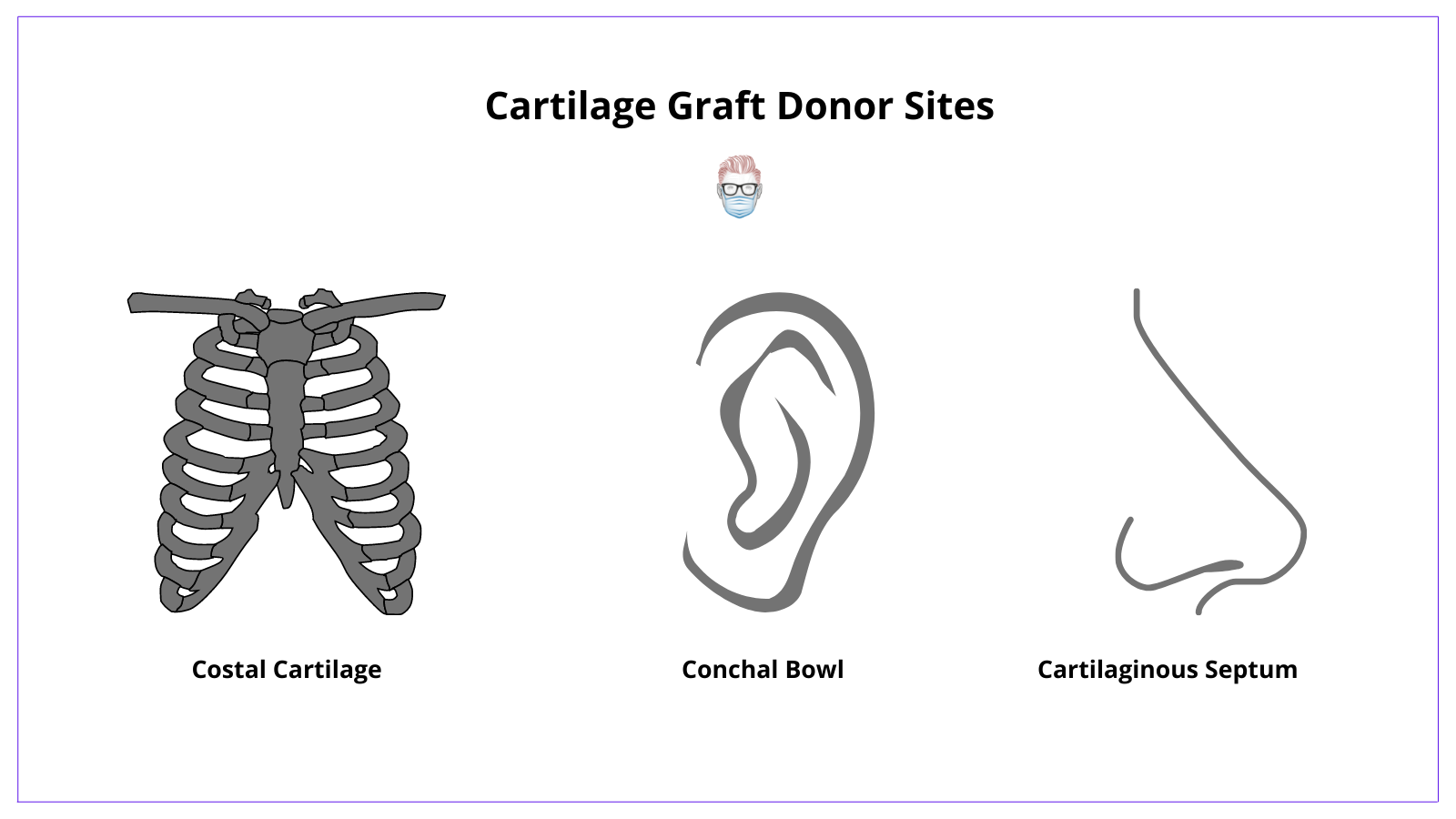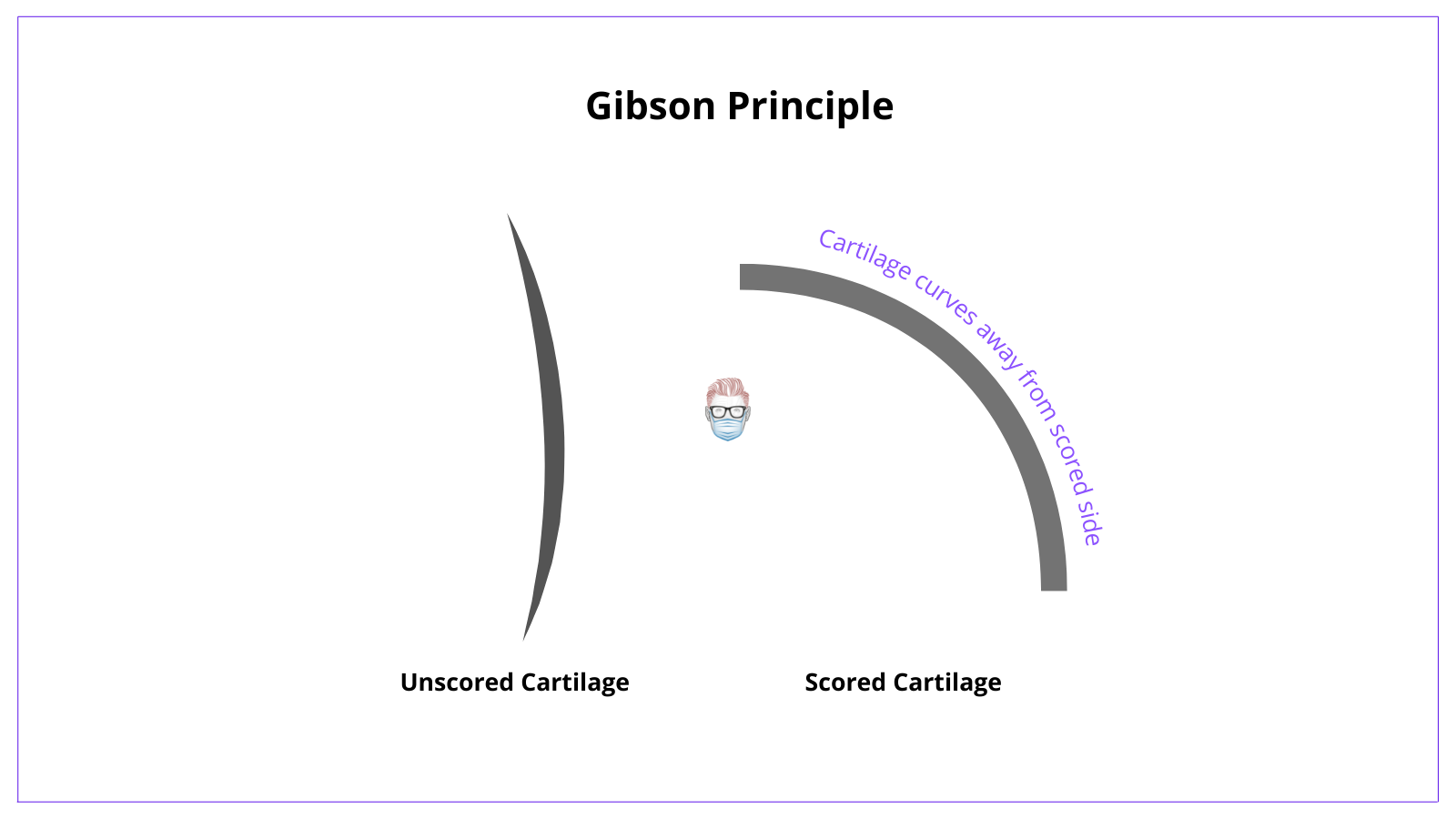Cartilage Grafts
1. Cartilage is an avascular structure of type II collagen, elastin & ground substance.
2. Cartilage grafts are classified as autografts, allografts and xenografts.
3. Autografts are the gold standard, whilst allografts and xenografts are rarely used due to immunogenicity and resorption.
4. Cartilage warping is the main complication and relates to Gibson's principle.
5. Cartilage has no intrinsic blood supply so healing is by fibrosis.
Cartilage Graft Anatomy
Cartilage originates from the mesenchyme and forms as chondroblasts transform into chondrocytes. There are different types of cartilage and an innate lack of blood supply.
Types of Cartilage
Cartilage is composed of type II collagen, elastin and ground substance in a dense extracellular matrix. The proportionally large volume of water provides the cartilage structure.
These components constitute the different types of cartilage:
- Hyaline Cartilage
- Fibrocartilage
- Elastic cartilage
Vascularity
Cartilage is avascular and has a relatively low metabolic rate. This means it is resistant to some aspects of surgery (such as ischaemia) but less forgiving in other parts (slow healing).
- There is no cartilaginous intrinsic blood supply
- It receives nutrition via the diffusion of nutrients and oxygen.
- A lack of blood supply impairs healing and is usually fibrous in nature.
Cartilage Graft Types
In a similar fashion to bone grafts, cartilage grafts can be classified as autografts, allografts or xenografts. Generally speaking, the latter two options have limited success.
Cartilage Autografts
Cartilage autografts (from the patient) are considered the "gold standard" for reconstruction.
Common donor sites include:
- Costal cartilage
- Conchal Bowl
- Cartilaginous nasal septum

Cartilage Non-Autografts
Cartilage allografts and xenografts are less commonly used. Here's why:
- Allografts undergo rejection and resorption over a long period of time
- Xenografts are immunogenic even after processing.
Cartilage Warping
A significant limitation of cartilage is warping. This is the tendency of cartilage to change shape over a period of time. It relates to the Gibson principle.
Cartilage warping is the unwanted informational change that occurs after cartilage grafting due to a change in mechanical forces.

There have been methods described to reduce the risk of warping
- Gibson Principle: scoring of the cartilage will result in warping in the other direction (it curves towards the intact side) (Gibson et al, 1957)
- Delayed inset after cartilage harvest
- Perichondrial preservation to reduce tension is less commonly practised now.
Unlike bone grafts, there is less resorption and more easily shaped.
Flashcards
They are continually updated and are for thePlasticsPro users.
This is for thePlasticsPro
Join the Club to enjoy unlimited access to all of thePlasticsFella.
Join the Club

